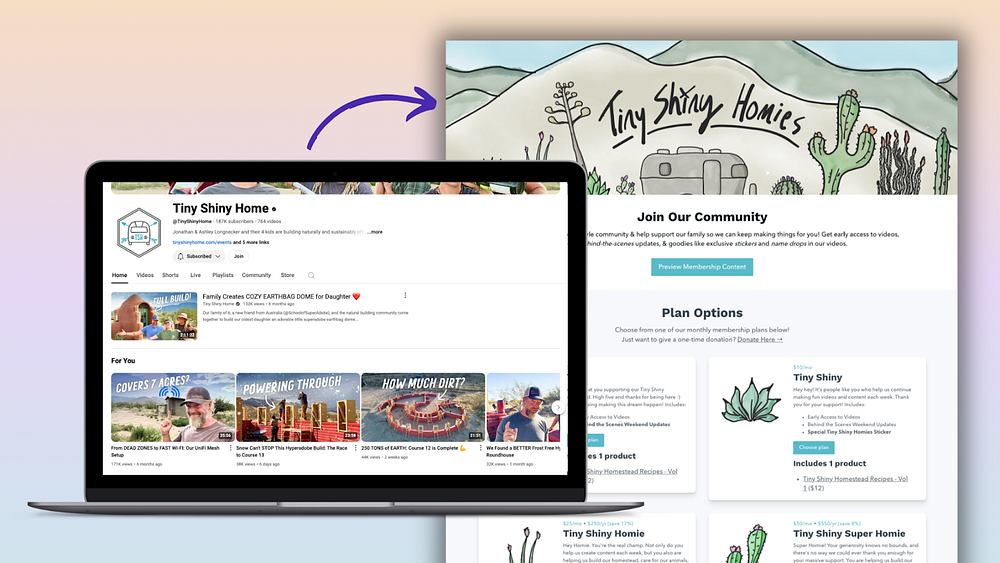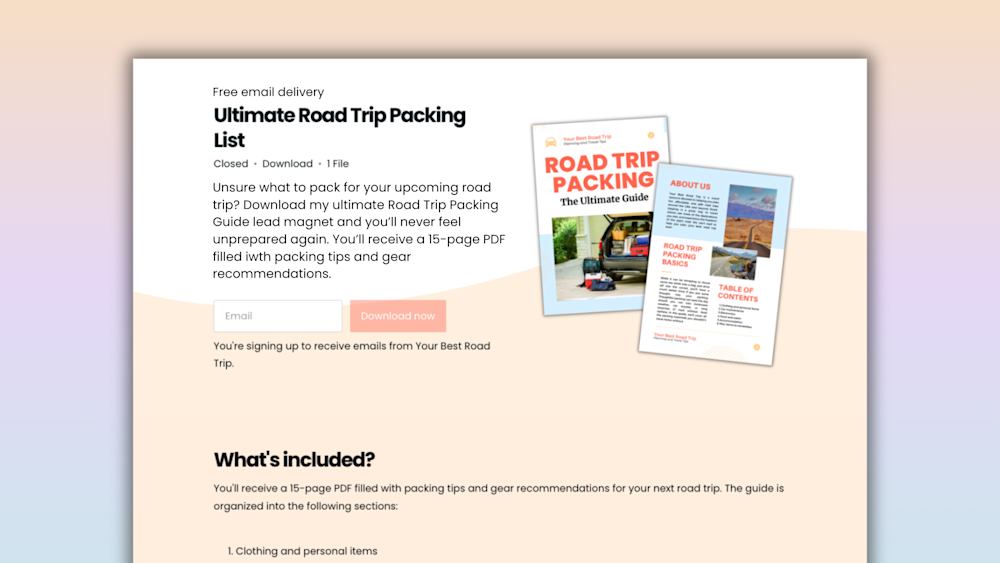A blog can be a core part of your marketing strategy as a solo business owner, but success takes more than just writing a few great posts.
From watching thousands of solo business owners build their blogs on Podia, we know that you need to create content that resonates with your target audience. You also need to structure your blog so it takes people on a journey from strangers, to blog post readers, to subscribers, and ultimately, to customers.
In this article, we’ll share:
-
The things other “how to build a blog” guides get wrong
-
How to set up your blog to avoid those pitfalls
-
How you can get traffic without relying on search engines
-
How to turn that blog traffic into subscribers and sales
By the end of this article, you’ll know exactly what steps to take to go from ‘just publishing blog posts’ to ‘just checking my sales figures from my blog.’
The thing most “how to start a blog” guides get wrong
A lot of blogging resources focus on the technical aspects of building a blog, and in the past, this made sense because setting one up was complicated, time-consuming, and expensive.
Having a blog meant configuring web hosting, buying a domain name from a domain registrar, installing WordPress, picking a theme, customizing it with code, getting frustrated when it didn’t look right, adding some plugins, deleting some plugins, realizing that everything is broken, and finally, after weeks of headaches, adding your first blog post.
Now, blogging is a lot simpler.
With all-in-one platforms like Podia, you can build your blog in an afternoon and your site will look great out of the box. You don’t need to deal with add-ons or complicated coding since everything is already connected.
But even though starting a blog is much more straightforward now, running a blog and consistently publishing great content still takes a lot of work.
And if your blog doesn’t lead to more sales, subscribers, and growth for your business, it can be tough to stay motivated. Why spend hours on something that doesn’t move the needle in your business?
We’ve seen thousands of Podia creators build successful blogs by using them as part of a bigger marketing system. A system where every post they publish builds trust, grows their audience, and leads readers toward their email list and paid products.
The key is setting up your blog so it works for you, not just adding “blogging” to your to-do list. Here’s how to turn your blog into a business asset that brings in more subscribers, sales, and growth.
How to start a blog that moves your business forward
For your blog to support your business goals, it needs to be easy to manage. First, we’ll cover how to set up a blog in Podia that’s simple to design and maintain.
Then we’ll look at the strategies solo business owners like you have used to get more traffic to their blogs — and turn that traffic into sales.
(Try Podia free for 30 days and follow along below to start your blog today.)
Step 1: Decide your blog niche and key blog topics
Before you start typing away, take some time to think about what kinds of blog articles and topics make sense for your business (or the business you want to have).
Remember, your blog is a tool to send new followers and potential customers to your email list and products. Your posts should cover topics that these target audience members are interested in and relate to what you sell.
A lot of bloggers do this through ‘content pillars’ or categories — essentially a short list of topics that all connect back to their business. Think: an online fitness coach blogging about workout routines, nutrition, and stretching.
Sticking to a smaller group of topics keeps your blog focused and saves you time since you don’t have to write about everything under the sun. Plus, it’s easier for new readers and search engines to figure out what your content is about.
For instance, classical piano instructor Joseph D’Amico has a blog about music, music teaching, and technology related to music. As you scroll through his articles, everything is related to one of these core topics.

Organization and productivity expert Krystal Clark writes blog posts about software, workflows, and routines to make entrepreneurship easier, all of which align with her productivity services, templates, and digital products.
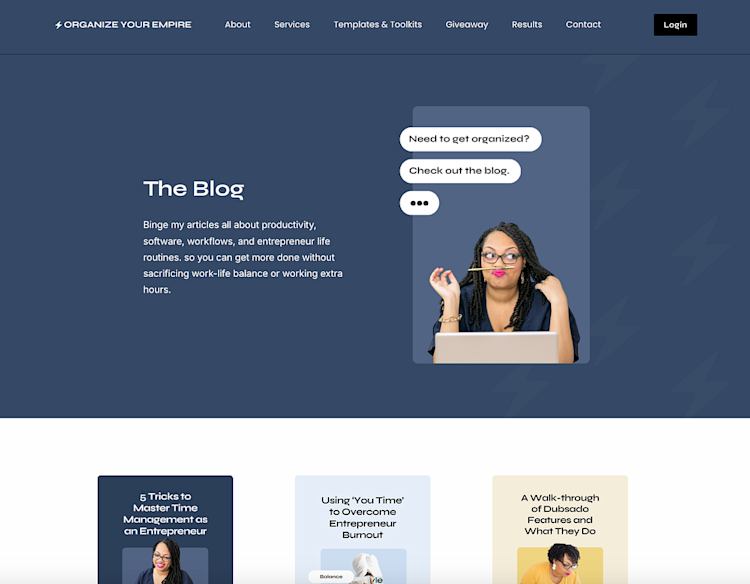
To get your wheels turning, here are more examples of blog categories or content pillar topics for different niches:
-
A photographer could use photography gear reviews, photo editing tutorials, and building a photography business as their categories/content pillars.
-
A painting teacher could cover topics like best painting supplies, step-by-step painting tutorials, and advice for improving your painting skills.
-
A life coach could blog about mindfulness, setting goals, work-life balance, and client success stories.
-
An author could share posts about productivity, creativity prompts, getting published, and tips for growing an audience.
As you start writing new posts, remember that each should fall into one of your blog categories. If a post doesn’t fall into one of your blog topics, it might be better suited for a different channel or not the right fit for your business.
(If you’re still stumped on what to write about, this article covers how to write a great blog post from start to finish.)
Step 2: Add your blog posts to your blogging platform
Head to the blogging area of your Podia dashboard and click “New post”. You can type or paste your article right into the text editor. You can also add images, links, dividers, buttons, and other text elements as part of your blog design.
Then, click through the summary, details, and SEO tabs next to your blog post. You can customize the author name, publish date, post URL, featured image, excerpt, categories, and SEO metadata. (The metadata is what you’ll use to tell search engines what your article is about. More on SEO in this article.)

When everything looks the way you want, press publish to make it live. You can come back at any time to make updates, so no need to make everything perfect from day one.
Step 3: Customize your blog post layout
Next, go to the Podia website builder. In the left sidebar, you’ll see options to edit the following blog pages:
-
Index: This is a page that displays all your blog posts in a grid, columns, or rows
-
Categories: If you use categories to organize your blog posts, you can customize the category page layout here
-
Blog post: This is where you’ll customize the layout of your individual blog articles

Click on the blog post layout first to customize how your blog posts appear. You can change the header and body layout, add background colors and images, and add page elements like email sign-up forms, author bios, and product promos (but more on that later).
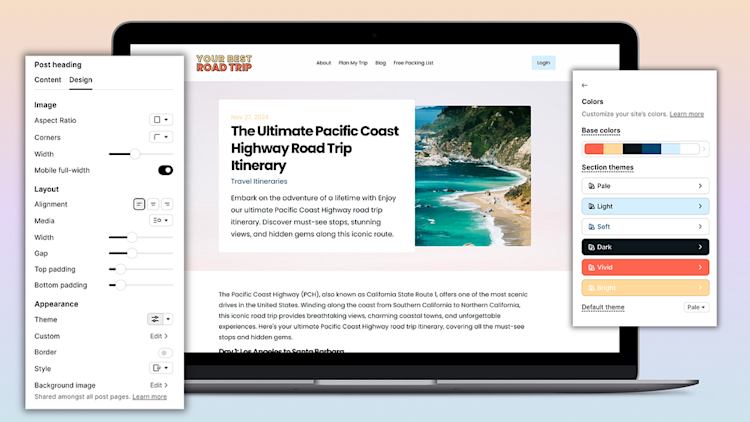
Step 4: Customize your blog index page and category pages
Next, go to the index layout page. This is where you can design your blog post archive, or the page that lists all your blog posts.
You can add a simple intro to your blog if you like, and you can also add elements like email sign-up forms, text boxes, images, and other featured content.
Roshini from The Pineapple Crowns has a blog introduction section at the top of the page, followed by an email sign-up form and a grid of recent videos. Then she uses a horizontal blog post layout to share her latest articles.
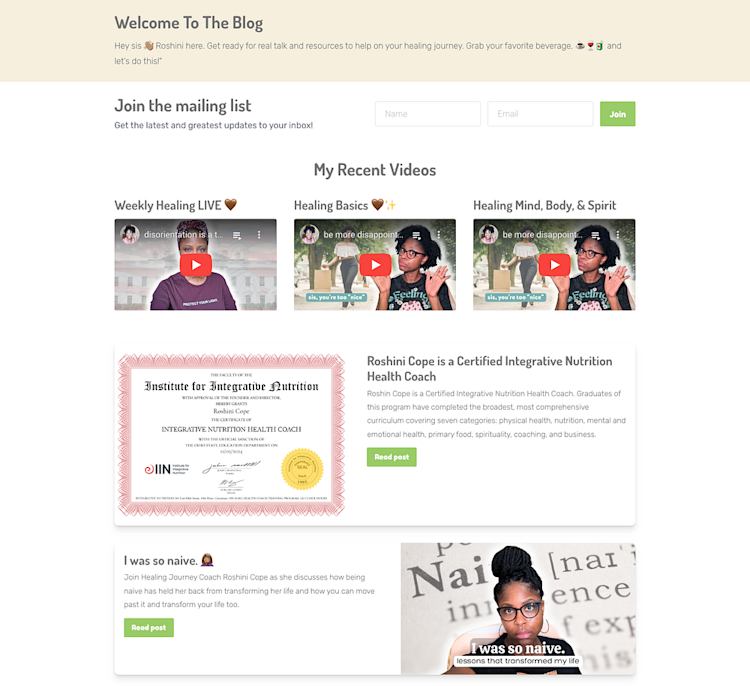
Abby from Yoga Traveler also has an introductory text followed by an email form, and then her blog posts are listed in three columns.
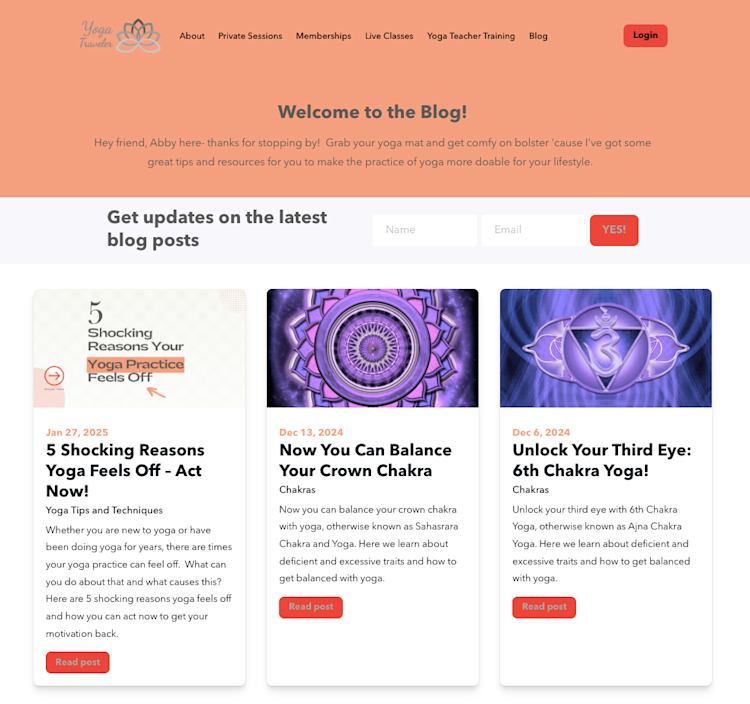
Once your index page looks the way you like, you can use these same customization options to update your category pages.
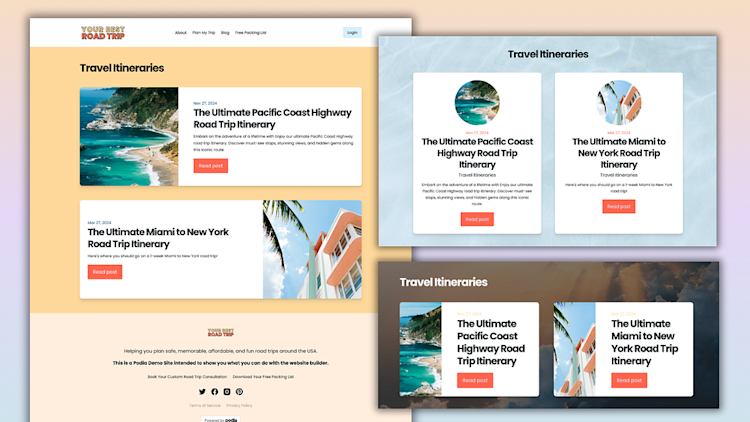
The beautiful thing about Podia is that you can set this up once and add as many posts as you like — everything will follow the formatting you set so your content looks cohesive.
Plus, your Podia blog is already connected to the rest of your business, so you can easily add products, your email list, online course promos, and anything else you want to showcase.
According to homeschool art instructor Jes Sudbrink, “Having one place where I can have everything stored and easily pull in products into emails, blogs, and more is invaluable! No more copy/paste fails when I simply select the product I need.”
No coding. No crazy tech. Just add your posts and press publish.
Step 5: Keep your blog up to date
You’re set up for success with a beautiful blog but remember that the best blogs need maintenance over time.
Information goes out of date, your experiences evolve, and your content pillars might even change as your business grows, so plan to update your blog posts once or twice a year.
Add internal links to any new articles or products you’ve published, make sure any facts or stats you share are still correct, check that links to other websites are still working, and give your posts a read to ensure they still match your messaging.
This way you can always feel confident that you’re sharing high-quality, up-to-date posts that are aligned with your work, no matter where you are in your journey.
How to get traffic to your blog (without relying only on search engines)
The next step to building a successful blogging system is to get more eyes on your work.
A lot of bloggers do this through Search Engine Optimization or SEO. SEO is an amazing way to get traffic to your website and grow your business, but if you get too hung up on SEO perfection, you might miss other powerful ways of getting traffic to your site.
Here’s my two cents:
-
Use the built-in SEO features in Podia (like adding metadata, an SEO title, and SEO descriptions)
-
Read this article about the basics of SEO to understand the fundamentals
-
Read this article about how to use SEO with blogging to sell digital products
For most solo business owners, this will be a great foundation for getting discovered by search engines. And in the meantime, you can try these other ways of getting eyeballs on your blog (and your business) based on what we’ve seen work for successful Podia creators.
Share your blog post with your email list
The first thing you should do after publishing content is share it with your email list or newsletter. Your subscribers have already said they want to hear from you, so let them know about all the great things you’ve written.
Podia already has this feature built in. When you publish a post, you’ll see a pop-up window where you can add an email subject line and preview text. Then you can press send to share it with your list in just a click.
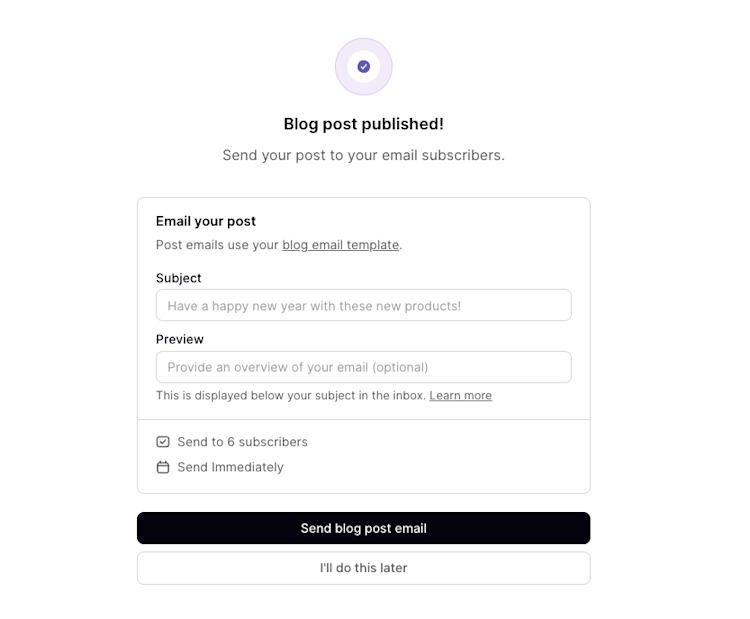
Talk about your blog content on your other channels
Already have a following on LinkedIn, Instagram, or another social media platform? Fantastic! Put it to work by sharing your articles and blog posts on the channels you already have.
You can drum up engagement on your social posts by asking people questions related to the article or asking them to repost your article for their own audiences.
Michelle Arseneault from Intendify Your Life has a system where she creates three Pinterest pins, Facebook posts, and Instagram posts for every new blog post she publishes. She gets the most traction on Facebook since that’s where her target audience spends the most time, but it doesn’t hurt to get more coverage on other platforms at the same time.
Collaborate with other people in your niche
If you know other creators or brands in your industry, propose a swap. Offer to share one of their blog posts with your audience and ask them to share one of yours in return. This is a win-win scenario because you get more attention on your work, and your followers get another helpful resource.
Repurpose your blog content into videos, podcast episodes, and other types of content
You put a lot of work into your blog posts, and you can get even more bang for your buck by reusing your work on other channels in your business.
Use your article as the basis for a podcast script or YouTube video, turn it into a series of tweets, create an email newsletter series, and always remember to link back to the full post.
How to turn your blog traffic into subscribers and sales
You’ve got the blog, and you’ve got the visitors, but how do you make that into money?
I know this sounds obvious, but making money with blogging starts with writing about topics that naturally lead to your paid products.
Michelle Arseneault, for instance, writes three blog posts related to each product she creates. She also links back to the product in each of those posts.

More broadly, when you write things that make your target audience members think, “Woah, they definitely understand my problem and can help me,” you build trust. And when those people are ready to make a purchase, you’ll be the one they think of.
For instance, course creator and instructor Glen Long shares blog posts like “Why people aren’t buying your course” and “Mistakes first-time course creators commonly make”.
Both of these topics would be very enticing to someone interested in selling courses, and Glen shows new readers that he can help them solve problems before they’ve paid for anything.
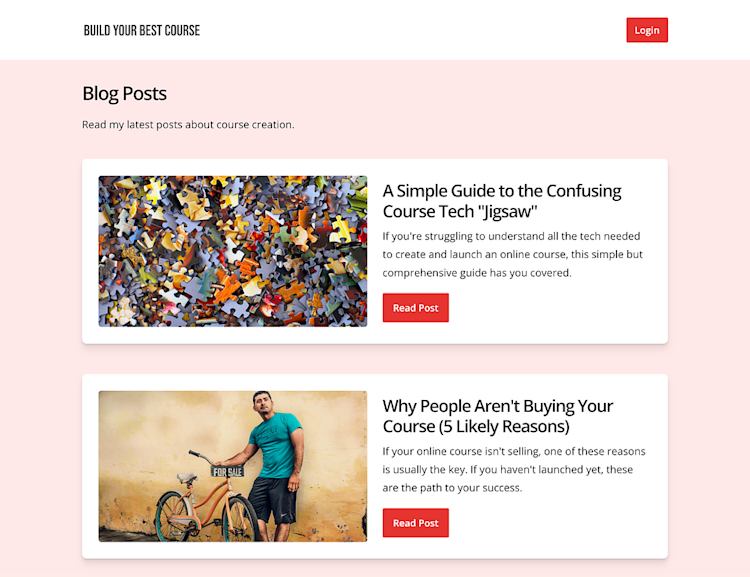
So answer word-for-word questions your audience is asking, compile lists of great free resources, post deep dive tutorials to things you know well, share your personal stories about achieving an outcome they also want to achieve — that way you attract readers who are already looking for your help, even if they aren’t ready to buy yet.
Once your target audience members are on your blog, make it easy for them to stay in touch with your brand by adding an email sign-up form or free lead magnet in each of your blog posts.
You can do this in your default Podia blog post template that you set up in Step 3, and it will show up on every post you publish.
Within the text of your article, you can also add a call to action for people to book discovery calls, buy an introductory product, or download a freebie. This gets them on your list and into your business ecosystem.
Lisa from pinkPOWER Sports & Lifecoaching has a free 7-day fitness challenge and a free email newsletter sign-up form at the bottom of each blog post.

Artist Carles Marsal has an email sign-up form and a grid of popular products at the bottom of his blog article, making it easy for readers to learn more about his work or take the plunge if they’re ready to buy.
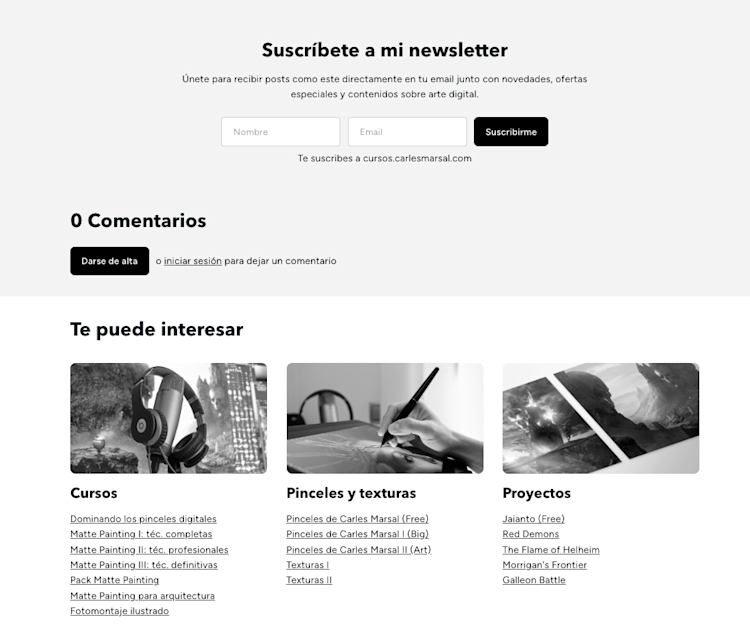
And Martijn from Design Sketching Courses has a link to a waitlist for his upcoming product at the bottom of his blog index page. Podia automatically keeps track of waitlist members so you can notify them when a product is available for purchase. (More info in this help doc.)
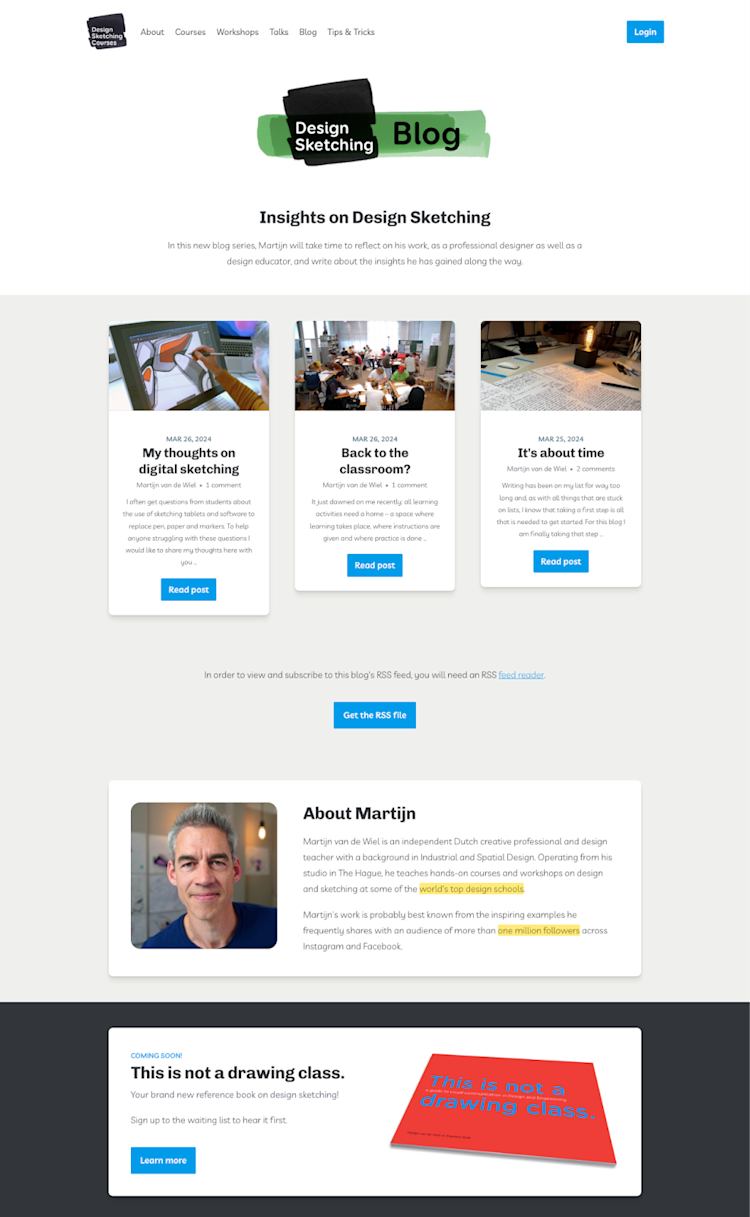
Customer experience expert Oliver West says, “What I love most about Podia is that it puts my lead generation on autopilot. I can post on LinkedIn and direct people to download my book on my site, and the platform takes care of collecting their emails. At the moment, it’s working quietly in the background without much promotion from me, but it’s already building my email list, which is a huge time-saver.”
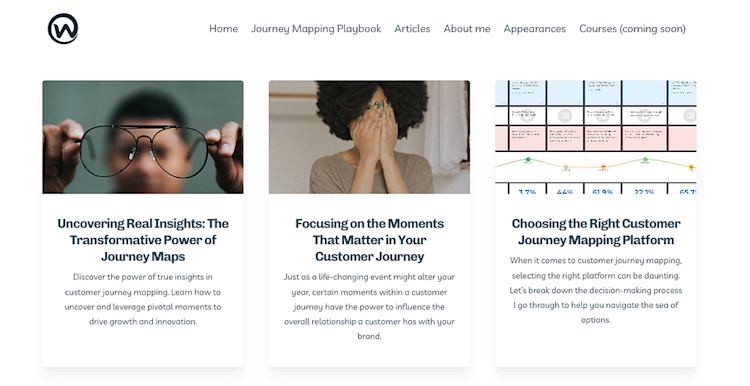
Just like Oliver, you can point people to download a freebie or subscribe while they’re reading your content and Podia will collect emails for you, chugging along in the background while you run your business.
The final piece of the puzzle? Communicating with those new subscribers regularly and telling them about your paid programs.
Once you’ve taken people from strangers → blog readers → email list subscribers, you can send them regular newsletters, run automated campaigns, build sales funnels, and sell new products to a list of people who are already interested in what you do.
A simple way to engage subscribers from day one is to set up an automated welcome campaign. Whenever someone signs up through a form on your blog, you can automatically send a message thanking them and welcoming them to your business.
A few days later, you can send them more blog posts they might enjoy or helpful tips to address their pain points.
And a few days later, you can tell them about one of your introductory products that you’ve specifically designed for people just like them.
Even if they don’t sign up for a paid product immediately, it’s no problem. Because they’re on your list, which means you have time to nurture the relationship and work together long into the future.
Your blog is more than articles. It’s part of a system that brings you more subscribers and sales
Starting a blog for your online business is more than just picking a theme, writing some articles, and hoping money magically appears in your bank account.
When you do it strategically, your blog can be a powerful tool for growing your business.
-
Set up your blog with an easy all-in-one platform like Podia so you don’t have to worry about expensive hosting, learning to code, and making a bunch of tools talk to each other.
-
Add new blog posts based on the topics your target audience is looking for, and share your blog posts with your email list, on social media, and with other creators in your niche. Follow basic SEO best practices to get the most eyes on your work.
-
Within each blog post, add an email sign-up form, free lead magnet, or introductory product to get people onto your email list. Once they’re on your email list, you can build the relationship long-term.
-
Set up an automated email marketing campaign when someone signs up through your blog. Provide free value and share information about your paid products over several days.
-
Stay in touch through newsletters and regular updates to keep building strong connections with your followers, all while your blog sends new people to your business on autopilot.
You can do all of this with one tool when you use Podia. Your products, website, blog, email list, subscribers, and customer data are all in the same place, so everything just works.
Try Podia free for 30 days and see how blogging can grow your business.
